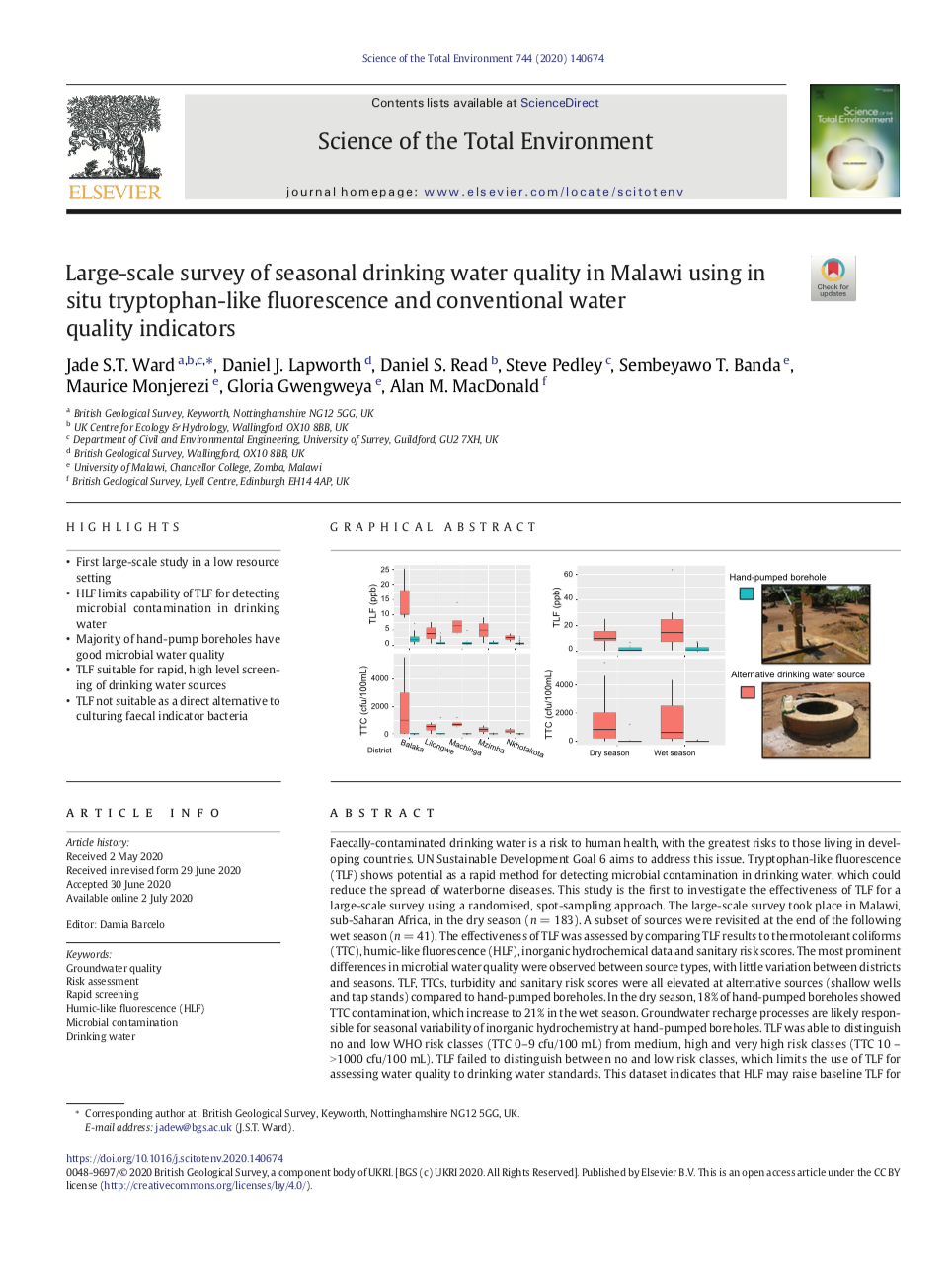Authors: Jade S.T. Ward, Daniel J. Lapworth, Daniel S. Read, Steve Pedley, Sembeyawo T. Banda, Maurice Monjerezi, Gloria Gwengweya, Alan M. MacDonald
Tryptophan-like fluorescence (TLF) shows potential as a rapid method for detecting microbial contamination in drinking water, which could reduce the spread of waterborne diseases. This study is the first to investigate the effectiveness of TLF for a large-scale survey using a randomised, spot-sampling approach.
The large-scale survey took place in Malawi, sub-Saharan Africa, in the dry season (n = 183). A subset of sources were revisited at the end of the following wet season (n = 41). The effectiveness of TLF was assessed by comparing TLF results to thermotolerant coliforms (TTC), humic-like fluorescence (HLF), inorganic hydrochemical data and sanitary risk scores.

